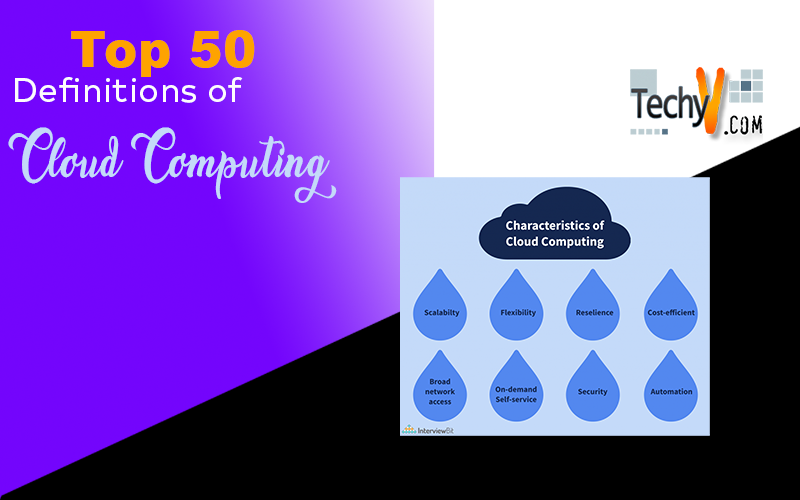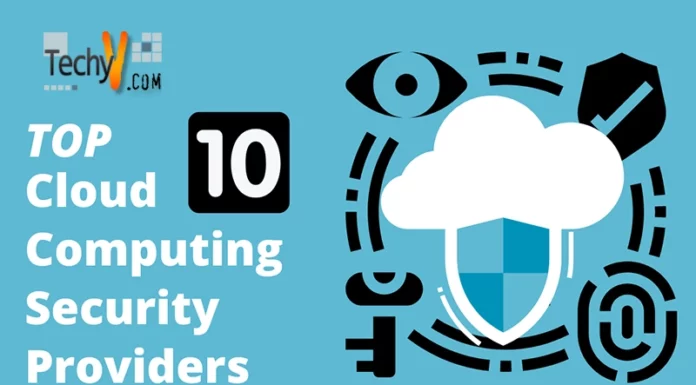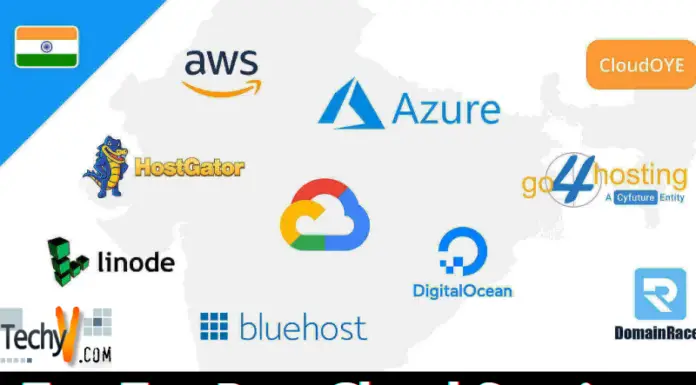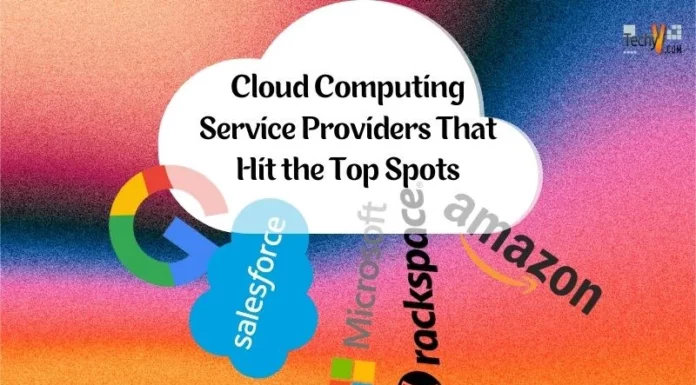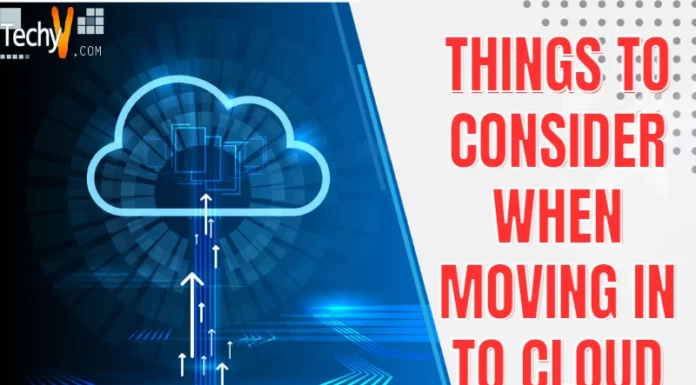Top 50 Definitions of Cloud Computing
As a topic, cloud computing is yet to be defined. However, the following are the 50 descriptions. Read on:
1. The lively stipulation of Information Technology (IT) potential including software, hardware or services from some third parties on the network is known as cloud computing.
2. Cloud computing is a form of computing, in which, the entire systems, servers, submissions and other components associated to facts and numbers hubs are made accessible to end-users and IT via Internet.
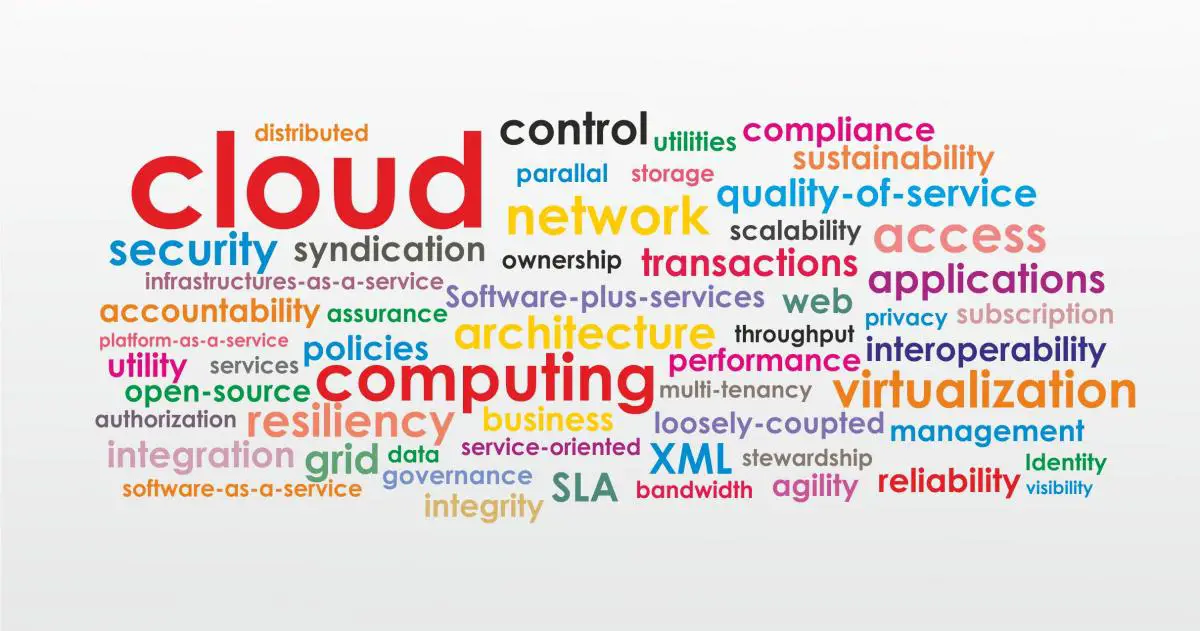
3. Cloud computing is a generic period for anything that engages consigning host-services on the new media (Internet).
4. Some people define it as, “Cloud computing is all the rage.”
5. According to Gartner, “Cloud computing is the saying du jour.”
6. As a metaphor, cloud is known as a “renowned formula”. However, when used together with the word “computing”, the vaguer it becomes.
7. According to some vendors and analysts, “cloud computing is a revised type of utility computing – fundamentally virtual servers accessible on the new media (Internet).”
8. Another broad definition of cloud computing is, “contending anything you spend out-of-doors, while the firewall is inside the cloud, encompassing accepted outsourcing.”
9. Cloud computing arrives into aim just when you believe habitually about IT needs.
10. It is a method to boost capability or to add-up potential on the go by plane with no buying into the latest structural design, while teaching new staff or authorizing new applications.
11. Cloud computing is an online computing, whereby distributed assets, programs and data are supplied to Personal Computers (PCs) and other apparatus on request, just like the electrical power grid.
12. Cloud computing is a common development of the prevalent acceptance of virtualization, service-based structural design as well as utility computing.
13. Sometimes it is also referred to as ‘Autonomic computing,’ which refers to the PC schemes adept of self-administration.
14. Different people take cloud computing as part of ‘Client–Server form,’ which is amply mentioned to any circulated submission, which differentiates flanked by the servers and clients.
15. Often people call it ‘Grid computing’ too as it’s a pattern of circulated and aligned computing, by means of which, a ‘super’ and ‘virtual computer’ is created of a networked cluster, roughly connected PCs portraying in live presentation to present pretty large assignments.
16. Different analysts are of the view that it is about the mighty computers used mostly by large associations for critical submissions, normally huge data-processing for example census, commerce and buyer details, enterprise asset designing, and economic transaction processing.
17. Sometimes, it is known as ‘Utility computing,” which is defined as the wrapping of computing assets, for example storage and calculation, as part of a lengthy service alike to a customary civic utility, such as electrical energy.
18. It is also known as ‘Peer-to-Peer computing,’ which employs circulated structural design without needing centralized coordination, having members being at the identical period, both the sellers and buyers of assets as compared to the customary client–server design.
19. Cloud computing is sometimes referred to as, ‘Service-oriented computing,’ which presents services associated to computing at the same time as in a joint kind, service-based computing comprises of the computing methods that function on Software-as-a-Service (SaaS).
20. It is a computing method, where hugely variable IT-enabled potentials are consigned as a service to outdoor clients utilizing new media technologies.
21. Some people are of the view that cloud computing is, ‘just about internet-based computing.’
22. In short, cloud computing entails utilizing new media for your entire computer needs.
23. Cloud computing enables you to shop entire data online even if you have no computer disc storage, programs, and hardware.
24. Some people say that ‘the use of services such as Google Mail (Gmail) or Hotmail, you are doing cloud computing.
25. According to Markus Klems, Amazon defines cloud computing by coining a word, ‘elasticity.’
26. According to Reuven Cohen, the easiest interpretation of cloud computing is, ‘new media based software.’
27. According to Jeff Kaplan, ‘cloud computing is a very broad collection of website-based services directed at permitting users to get a broad variety of purposeful potential on pay-as-you-go cornerstone, that before needed marvellous software or hardware funding and expertise to obtain.
28. He also defines cloud computing as the comprehension of previous utility computing standards with no mechanical intricacies or perplexing operation qualms.
29. Douglas Gourlay defines cloud computing as, ‘inpiduals are approaching to grab with computer generated IT re-shaping, which conceives service and programs founded forms and in numerous modes alters many of the personal level we are addicted to. Clouds may be the subsequent alteration in some future years, construction of the program forms that were enabled by the virtualization.
30. Praising Gaw’s definition of cloud computing states that, it is the very broad notion of using new media to permit inpiduals to get access to tech-enabled services, which should be highly scalable.
31. Sometimes, it is said to be an ‘Off-site computing.’ Its rudimentary standard is to access IT assets available in a facts and numbers hub, which are actually not your own. It entails that you did not purchase storage and servers, but somebody else does.
32. Cloud computing is sometimes called, ‘virtual computing’, as it offers you to gather IT assets with the ease of drag-and-drop.
33. Cloud computing is sometimes known as, ‘on-demand computing.’
34. Cloud computing is also said to be a ‘Subscription style’ by many users. They’re of the view that it is inclined to be long-term agreements, which are usually payable by borrowing business card, other than yearly contacts.
35. Cloud computing is also known as ‘Shared computing.’ As for the finances of scale, numerous service suppliers employ a multi-residual structural design to compress work burdens from more than one client up on the identical personal machines.
36. Cloud computing is also ‘Simple computing,’ as if most of the cloud services suppliers focus in submission storage, hosting, or compute circuits, let you configure and signal up assets in a couple of minutes, utilizing a line, which you do not need to comprehend as a scheme manager.
37. Cloud computing is ‘Web-based computing,’ as it engages browser to get access to the hosted resources and facts and numbers.
38. Cloud computing can also be defined as getting an ‘on-demand’ access to the computer generated IT assets, which are resided out-of-doors of your own facts and numbers hub, distributed by other ones, straightforward to employ, salaried for by subscription, and are available online.
39. Cloud Computing is an emerging IT operations, development and consignment, endowing real-time consignment of services, goods and answers online.
40. It is a normalized IT potential, offering programs, services or road and rail network, consigned by new media technologies in a disburse-per-employment, inpidual-service manner.
41. It recounts a form of service that blends a generic coordinating standard for IT consignment, road and rail network constituents, an architectural set-about with a financial form – fundamentally, a flowing together of virtualization, grid & utility computing, SaaS and hosting.
42. The cloud computing is IT service offered to the client, consigned by computer generated assets, which are unaligned of site.
43. Cloud computing is the anthology of subjects, technologies and forms of enterprise used to provide IT potential as on-request services.
44. Cloud computing is a collection of internet-oriented devices and services that enable users to come by computing assets and advance potential to construct or prop up submissions, or present exact IT purposes on the basis of pay-as-you-go.
45. Cloud computing are the energetically expandable, computer generated data services consigned on request online with multi-residual potential, service-level affirmations (SLAs) and handling-centric pricing.
46. Cloud computing is an expertise, which values new media and centralized isolated servers to sustain facts and numbers along with the applications.
47. Cloud computing from user’s perspectives, is utilizing Web submissions and/or server services, which is yield to get access other than programs or hardware that are purchased and installed.
48. Cloud computing is a generic terminology, which can be used for anything that entails delivery of hosted-services online.
49. The type of computing, which involves delivery of storage and services online by a cloud, is known as cloud computing.
50. Cloud computing involves retrieval of computing assets, which are typically the property of a third-party provider, who owns and operates them on a secure basis in facts and numbers hub sites.


